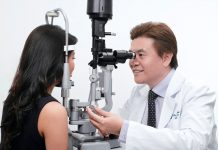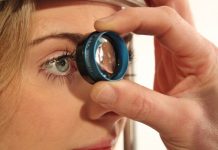Whenever your brain receives more than one image from both of your eyes, then it can result in a vision defect, know as strabismus.
Most commonly, this condition is also known as cross eyes or squint eye.
Each of your eyes focuses on the same spot, but transmits a slightly different message to your brain. Your brain superimposes both the images and gives a depth and dimension to your vision.
Strabismus can cause blindness, if ignored!
Strabismus or cross eye is quite common in newborn infants. If your child is experiencing crossed or wandering of eyes, then he/she might get a different picture from each of their two eyes and the brain of your child tries to block out the picture from the weaker eye. In normal vision, both of your eyes focus in same direction at same time.
If you are unable to identify or fix the problem in the early age of your child, then your child’s brain gradually improves to ignore the picture blocked from weaker eye. This kind of vision loss due to strabismus or cross eyes, leads to most serious problem called amblyopia.
Strabismus – misalignment of your eyes!
With the normal vision, both of your eyes aim at the same spot. Then the brain places the two pictures into one individual eye as three dimensional image. This blend of two pictures can help us to give deep perception in vision. According to the degree of misalignment of your eyes, the strabismus is usually categorized into three basic types, which usually include:
Esotropia: This kind of misalignment usually affects either one or both of your eyes and it can also alternate between the two eyes. With this esotropia, your eyes will be normally turned inwards towards your eyes.
Hypermetropia: This is an upward gaze or look of any one of your eyes, while the other one reside straight and fixates normally.
Exotropia: In this type of strabismus, your eye can usually turn outwards away from your nose. There is a chance for one or both of eyes to get affected with this type and causes disturbance in your normal vision.
For most of the children, who have strabismus, usually their parents or any family friends or pediatrician, initially notice the misalignment in eyes. Very rarely, you can observe a red reflection in the pupils of the eyes of affected child. So, beware of this strabismus in your kid. Try to identify it as early as possible and help your child in providing a proper vision.














